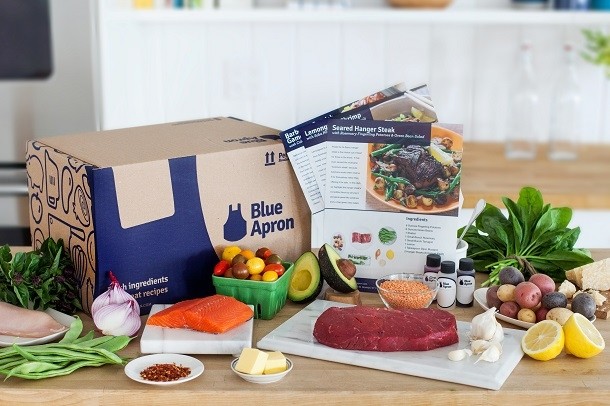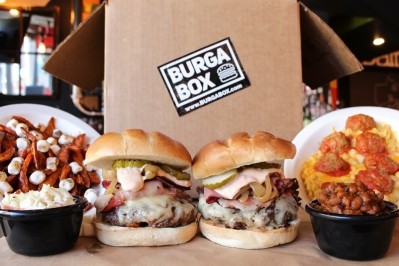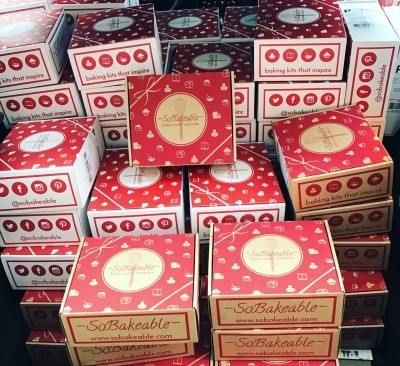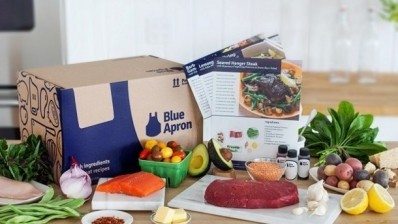Grocers explore options to defend against growing meal kit category

Since 2012 when the first few meal kit delivery companies entered the scene, including Blue Apron, Hello Fresh and Plated, the number of players in the nascent category has swelled to more than 150 in the US alone, according to market research firm Packaged Facts.
It predicts that together these companies likely will rake in a combined $1.5 billion in 2016, and could easily elevate the category to the multi-billion dollar level in the next five years.
With so much money on the line, Packaged Facts predicts that “many new competitors – including savvy niche players, retailers, food manufacturers and restaurants – will test their own mettle in this budding industry.”
As a result, “meal kit delivery services have the potential to disrupt both the restaurant industry and the grocery industry because they allow people to cook restaurant-quality meals at home without going out to the grocery shop,” the report notes.
Use of meal kits remains low
While the potential for this threat is real, it isn’t quite here yet, judging by the results of a survey of 2,023 US adults conducted in February 2016 by Packaged Facts that found only 16% of respondents say they had meal kits delivered to their home in the 30 days before the survey. This number could be even lower, the market research firm cautions, explaining that consumer interpretations of the survey question terminology varied owing to the relatively new concept of prepare-at-home fresh meal kits.
This is a fraction the 49% who use food delivery services and the 32% who ordered ready-to-eat food other than pizza delivered in the same period – suggesting these options are a more significant threat to grocery retailers.
The number of meal kit users also is less than the 26% who report having groceries delivered – a service that some grocery retailers are ramping up to defend against growing pressure from ecommerce sites. This strategy also could help forfend against advancing losses to meal kits, especially considering consumers who buy meal kits are twice as likely to order groceries on line for delivery compared to those who do not order meal kits, according to Packaged Facts.
Ahold USA, which operates 770 supermarkets across the US, is an example of one retailer that is embracing this strategy. It operates the online grocery shopping and delivery service Peapod in 12 states. The retailer in February expanded its pick-up locations to include lockers at several Washington, DC, Metro stations – giving consumers another convenient option.
Other defensive options for grocery retailers
Another option for retailers hoping to prevent against market loss to competing meal kit companies is to jump directly into the fray, suggests Packaged Facts.
“Rather than worrying whether meal kit delivery services will cut into their business, some grocers and food marketers are taking the bull by the horns and starting their own such services,” the report notes.
For example, Whole Foods Market discussed plans to enter the meal kit segment during its July 27 conference call with investors. Details were sketchy, but executives acknowledged growing consumer interest in meal kits and said the retailer is exploring its options.
Grocers that want to compete in the space but aren’t sure how also can consider teaming with technology services, such as DinnerCall – which is an online platform and app that lets consumers order ready-to-eat or –cook dinners from grocery stores.
Another option for grocery retailers is to “scoop up a meal kit delivery service to gain quick entry into the business,” Packaged Facts suggests. It expects some existing players may be interested in such a deal because the “obvious next-step growth strategies for existing meal kit delivery services are mergers and acquisitions and going public.”
It predicts in the next few years, regional players in the US will merge to expand territory, placing pressure on smaller players and potentially pushing them to look to retailers for partnerships.










